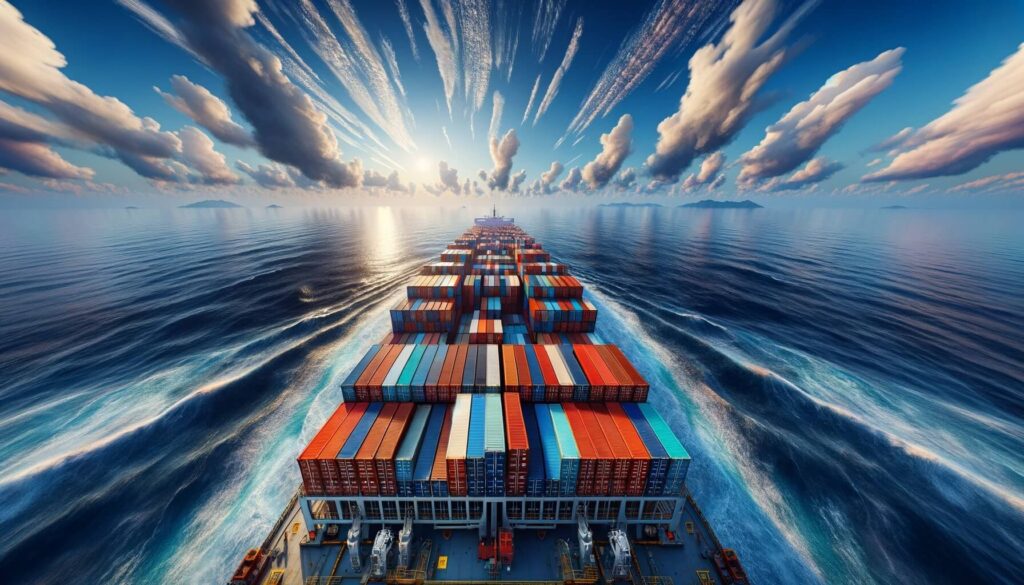- By TOP CHINA FREIGHT
- July 25, 2025
- Shipping
Shipping goods from China to Australia is a crucial part of international trade for many businesses. If you’re dealing with smaller cargo volumes, LCL (Less than Container Load) shipping might be the perfect solution. It allows importers to share container space and save costs—making it ideal for startups, SMEs, and even large companies with light shipments.
This guide will walk you through everything you need to know about LCL shipping from China to Australia, including the process, costs, transit time, benefits, and tips for success.

1.What is LCL Shipping?
LCL (Less than Container Load) shipping is a method where your cargo shares space in a container with goods from other shippers. Instead of paying for a full container (FCL), you pay only for the volume your goods occupy—measured in cubic meters (CBM).
2.Popular LCL Shipping Routes from China to Australia
| China Port | Australia Port | Estimated Transit Time |
|---|---|---|
| Shanghai | Sydney | 18–22 days |
| Ningbo | Melbourne | 17–21 days |
| Shenzhen | Brisbane | 15–20 days |
| Qingdao | Fremantle (Perth) | 20–25 days |
| Guangzhou | Adelaide | 21–26 days |
Note: Transit times may vary due to weather, customs clearance, or peak season congestion.
3.LCL Shipping Costs from China to Australia
| Fee Type | Description | Typical Cost Range |
|---|---|---|
| Ocean Freight | Based on volume (CBM) and weight | $30–$60 per CBM |
| Origin Charges | Warehousing, handling, documentation in China | $50–$150 |
| Destination Charges | Handling, unpacking, customs clearance in Australia | $100–$300 |
| Customs Duties & Taxes | Based on HS code, CIF value, and GST (10%) | Varies by product |
| Freight Forwarder Service Fee | Optional but recommended | $100–$200 |
Example: Shipping 2 CBM of electronics from Shenzhen to Sydney could cost around $250–$400 (excluding duties).
4.Advantages of LCL Shipping
| Advantage | Explanation |
|---|---|
| Cost-Effective | Only pay for the space you use—ideal for small shipments. |
| Flexible | Ship as little as 1 CBM; no need to wait to fill a full container. |
| Frequent Departures | Most routes have weekly sailings, ensuring regular shipping options. |
| Widely Available | Access to all major ports in China and Australia. |
5.Disadvantages of LCL Shipping
| Disadvantage | Explanation |
|---|---|
| Longer Handling Time | Extra time needed for container consolidation and deconsolidation. |
| Higher Risk of Damage | Mixed cargo increases the risk of damage due to multiple handlers. |
| Complex Documentation | More coordination needed for shared container cargo. |
6.Key Documents Required for LCL Shipping
| Document | Purpose |
|---|---|
| Commercial Invoice | For customs valuation and clearance. |
| Packing List | Describes contents, dimensions, weight of cargo. |
| Bill of Lading (B/L) | Proof of shipment; used for cargo release. |
| Import Declaration | Filed with Australian Border Force (ABF) |
| Certificate of Origin | Required for duty calculation or trade agreements. |
7.Steps in the LCL Shipping Process
- Cargo Pickup – Your freight forwarder arranges pickup from the supplier in China.
- Consolidation – Your goods are packed with other shipments in a warehouse.
- Export Customs Clearance – Forwarder handles clearance at the Chinese port.
- Sea Transport – Cargo sails from China to Australia.
- Deconsolidation – Goods are unpacked at destination warehouse.
- Import Customs Clearance – Submit documents and pay duties.
- Final Delivery – Cargo delivered to your warehouse or business.
8.Tips for Smooth LCL Shipping from China to Australia
- Work with a trusted freight forwarder to manage consolidation and customs.
- Ensure proper labeling and packaging to avoid damage or customs delays.
- Provide accurate documentation to prevent costly fines or delays.
- Plan for extra time due to potential delays in consolidation.
- Understand Australian import laws, especially for restricted items.
9.When Should You Choose LCL Over FCL?
Choose LCL if:
- Your shipment is less than 13–15 CBM.
- You want to save on shipping costs.
- You don’t mind slightly longer delivery times.
- You want to test a new product or supplier with a small batch.
Final Thoughts
LCL shipping from China to Australia is a practical, affordable option for importers moving small to medium quantities. While it involves more coordination than full-container shipping, it offers flexibility and significant cost savings when managed correctly.
Partnering with an experienced freight forwarder is key to navigating customs, minimizing delays, and getting the best rates.
Need a Shipping Quote?
Click below to get a free, no-obligation quote from TJ China Freight.
We’ll respond within 24 hours with the best shipping options for your cargo.
FAQ:
Q1: What is the minimum volume for LCL shipping?
Usually 1 CBM (Cubic Meter), but some forwarders accept smaller volumes.
Q2: Do I need a freight forwarder for LCL shipping?
Yes, a forwarder coordinates the entire process, from consolidation to delivery.
Q3:Are there hidden costs in LCL shipping?
Yes—destination handling charges, customs fees, and deconsolidation fees may apply. Always request a full quote.
Q4:Can Alibaba suppliers handle LCL shipping?
Many suppliers can arrange LCL shipping through their forwarders, but using your own forwarder offers more control.
Q5:Do I have to pay import tax from China to Australia?
Yes, import duties, GST (Goods and Services Tax), and other fees may apply. Australia charges 10% GST on most imported goods based on the CIF value (Cost + Insurance + Freight). Duty rates depend on the product’s HS Code.
Q6:Does Australia have a free trade agreement with China?
Yes. The China–Australia Free Trade Agreement (ChAFTA) came into effect in 2015. Under ChAFTA, many goods are duty-free if they meet the rules of origin and are accompanied by a Certificate of Origin. However, GST still applies.
